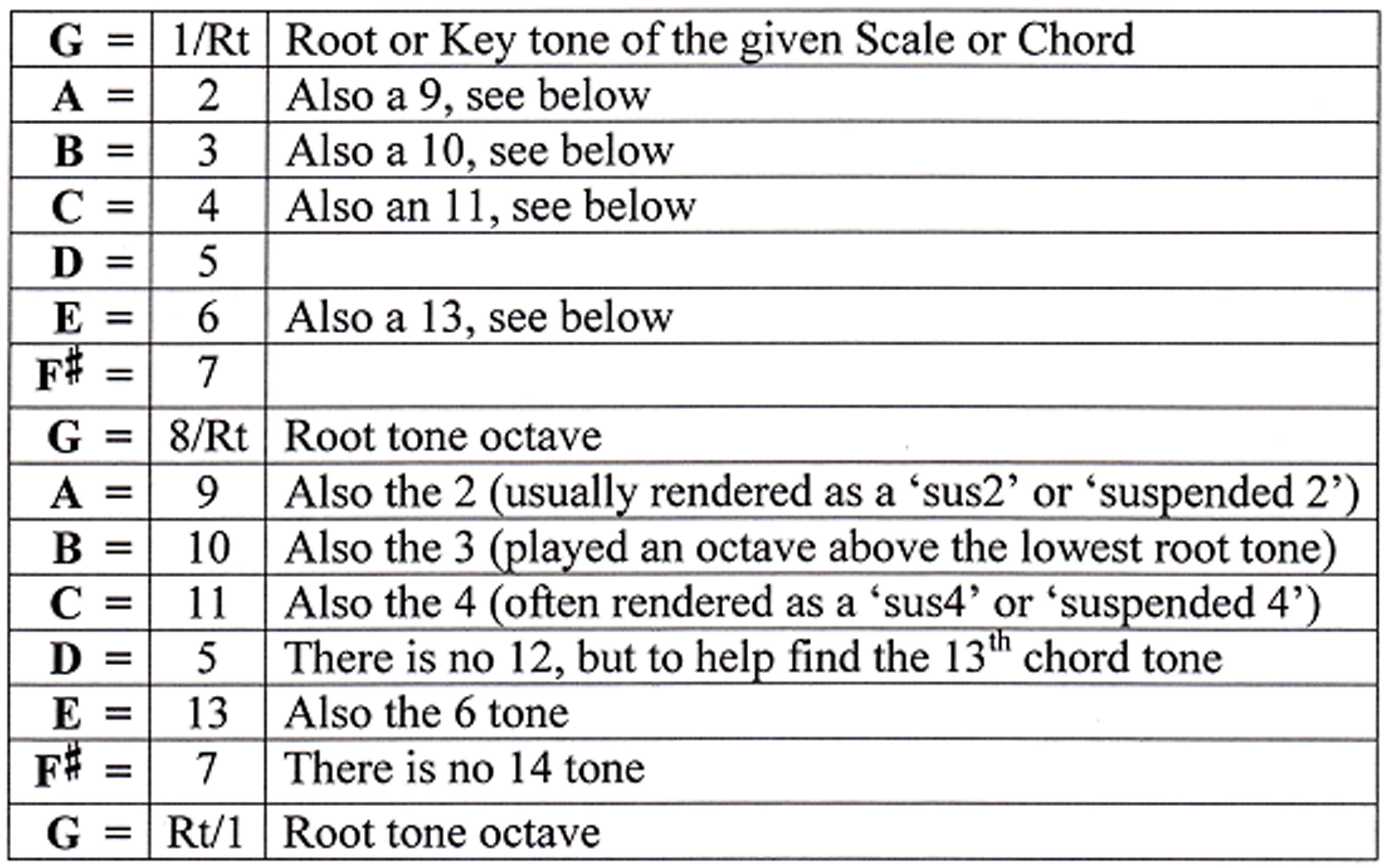
Chords And Arppegios
We're going to revisit chords and arpeggios again which, as you should know, are chords played one note at a time. We touched
on the idea of arpeggios in the very first column here and just recently here, but without wading
very deep into the topic beyond rudimentary ideas to give you a sense of what they are about and how you might use them in a simple fashion. Here, we'll dive deeper into the substance.
First, we'll start with chords.
Chords are the building blocks of progressions in music, string three or four chords that sound good together and you have a progression. Melodies are played over progressions. All chords are
derived from the Ionian mode, more commonly known as the Major scale. If you do not know the Major scale, learning to understand chords will be difficult, and figuring out more
complex chord voicings will be nearly impossible apart from a "trial and error" approach. Don't be that guy or gal! Don't stumble along with a trial and error mentality.
So, let's just make no assumptions here and start simple - which may mean "review" for some of you. Stick with me, even if you know some of this.
The Major scale is the "do, re, mi" scale we all learned as a kid. Think, "The Sound Of Music", "Doe, a deer, a female deer; Ray, a golden drop of sun..." Below is
a table to demonstrate the notes in the G Major scale, along with their numeric equivalent, over two octaves.

Take note of what is in the last column of the table, the explanations. Four of the notes, the 2, 3, 4 and 6, also have a secondary numerical designation. They still retain their original identity, but for the purposes of creating more complex harmonic intervals (the complicated way of saying "chords"), these notes take on an additional identity value to make that possible. It makes them sound different, too, in part because of how you employ them beyond their primary roles. But they can still be their core selves, too. I know, it can get confusing. But by time, experience and just learning these basic ideas, you'll eventually understand it well enough.
There are six chord types. By type, we mean "family":
So, if we begin by taking the information above and apply it in the simplest way, creating a G Major chord, we would play the G, B and D tones simultaneously (harmonic interval) or in succession (melodic interval/arpeggio). So we are playing the 1/G, the 3/B, and the 5/D tones. Look at the chart above.
The same applies to the G minor chord, playing the G, Bb and D tones, again the G is 1, the Bb is the b3, and the D is the 5 tone. Again, look at the chart.
Since Bass does not lend itself well to playing chords, we generally play the melodic arpeggiated form to create a chord figure, as demonstrated here:
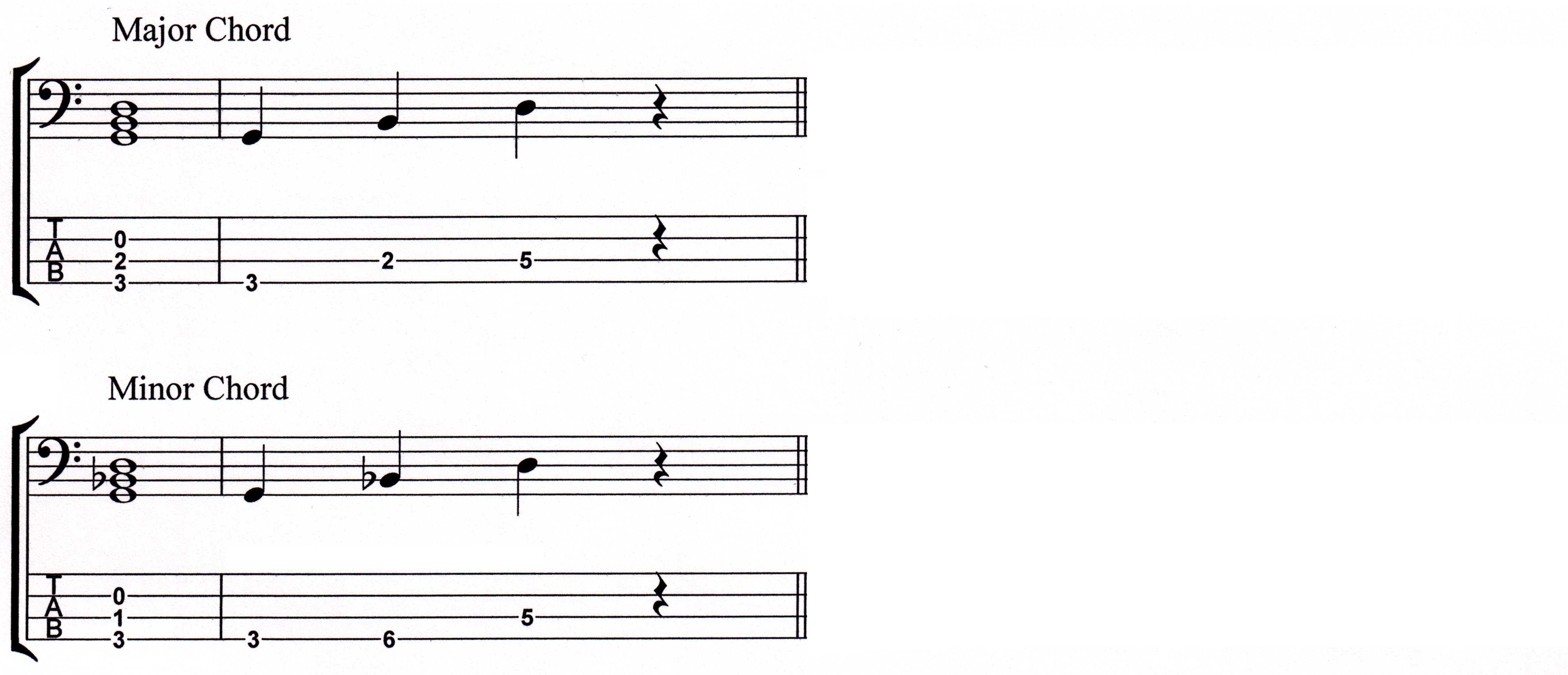
For major and minor chords beyond the basics, simply add the extension(s) you require, whether the 7, 9, 11 or 13, to create the sonic character of the chord you want to voice. In other words, once you hit the maj7 or mi7 chord (1, 3, 5, 7 tones), it becomes "additive", meaning that to play a maj9, you play a maj7 and add the 9. Reference the chart above.
So a major 7 in G would be: G/1, B/3, D/5, F#/7. The minor 7 in G would be: G/1,
Bb/b3, D/5,
F/b7. Here are the Major and minor 7 chords:
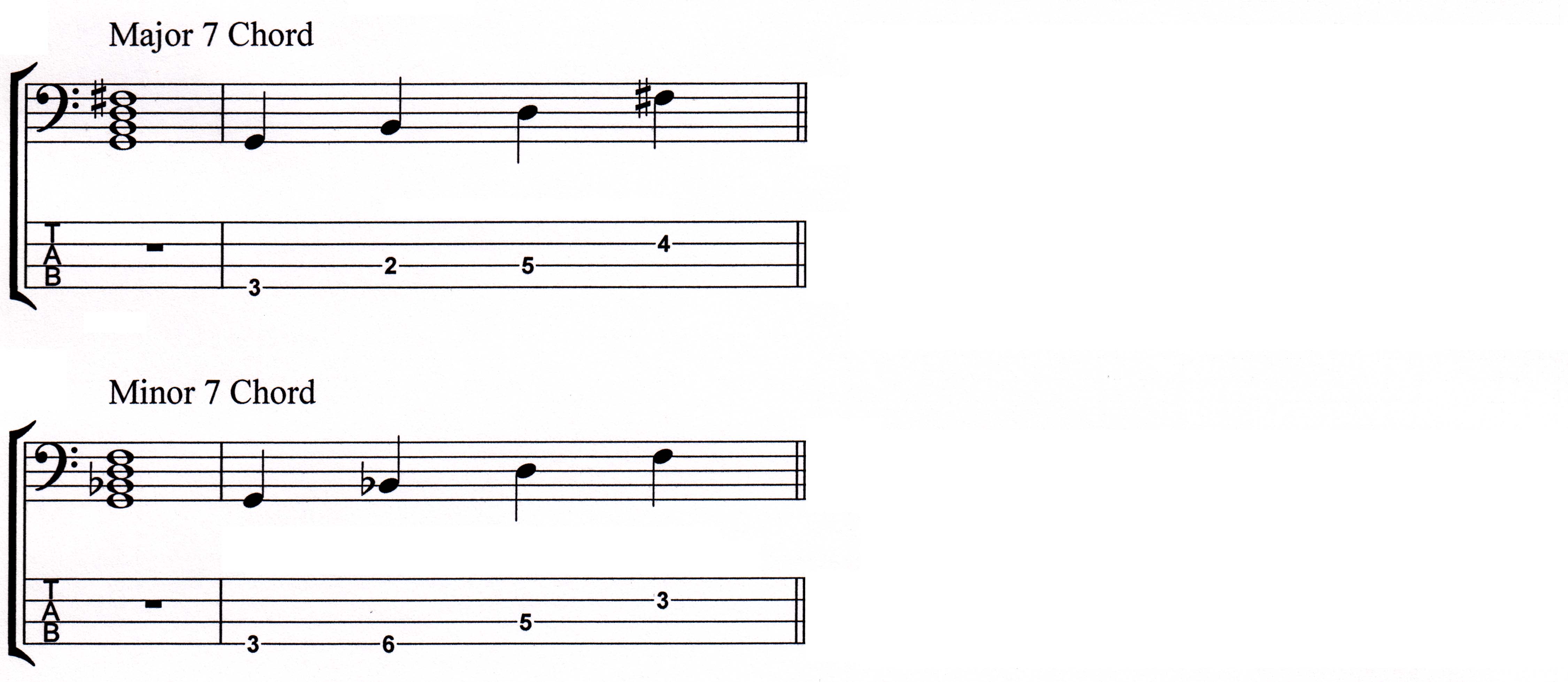
For the major and minor 9, just add the A tone on top:
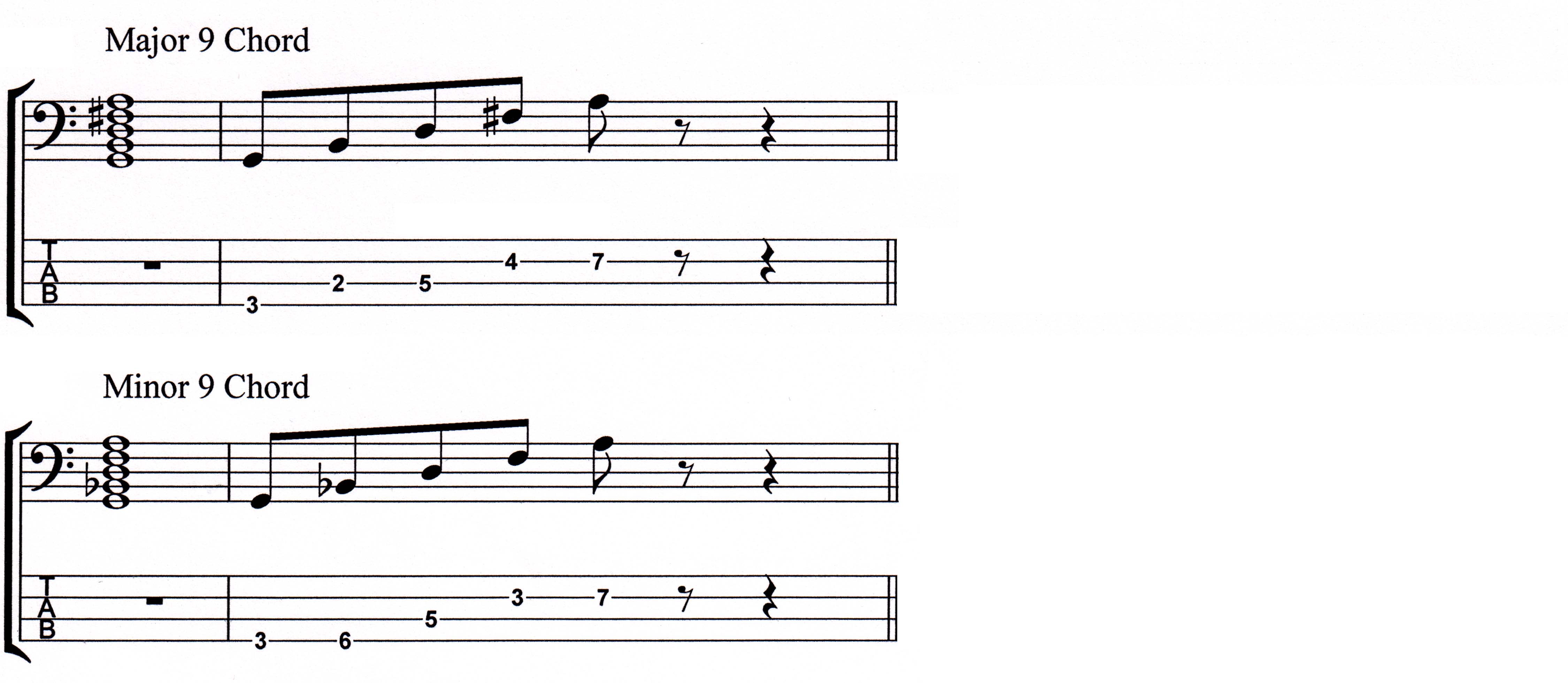
You continue to add tones for the 11 and 13 chords. So 1, 3, 5, 7, 9, 11, and the 13 can all be part of the major 13 or minor 13 chord (modifying the 3 and the 7 tones for the minor variant). Look at the chart again.
But - remember, that you don't have to play every single tone that a given chord contains. You can play whatever parts of the chord that preserve the character you wish to convey. So, for example, if you want to play a minor 13 chord, you don't need to play all those notes - there are seven in the full minor 13 chord. You can simplify the voicing by playing the necessary parts: 1, b3, b7, 13.
For dominant chords, you have a little difference; the dominant 6 chord is spelled 1,3,5,6 - the same as a major 6 chord (context determines which is which), but from the dominant 7 chord up, it becomes additive as well, just like Major and minor chords (but with a perfect 3 and a b7).
So a Gdom6/Gmaj6 would be: G/1, B/3, D/5, E/6. A Gdom7 would be: G/1, B/3, D/5,
F/b7. Look at the chart!
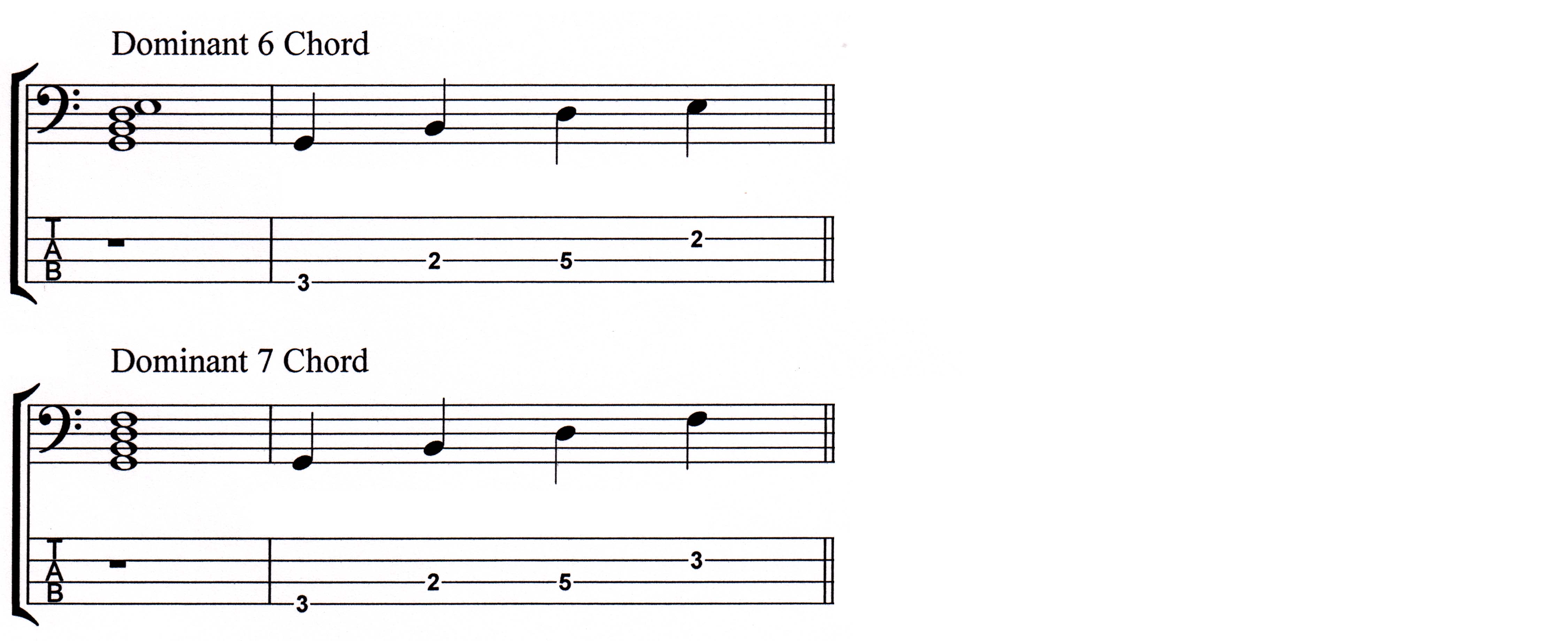
For diminished chords, follow these rules:
Therefore (and referencing the chart!)...
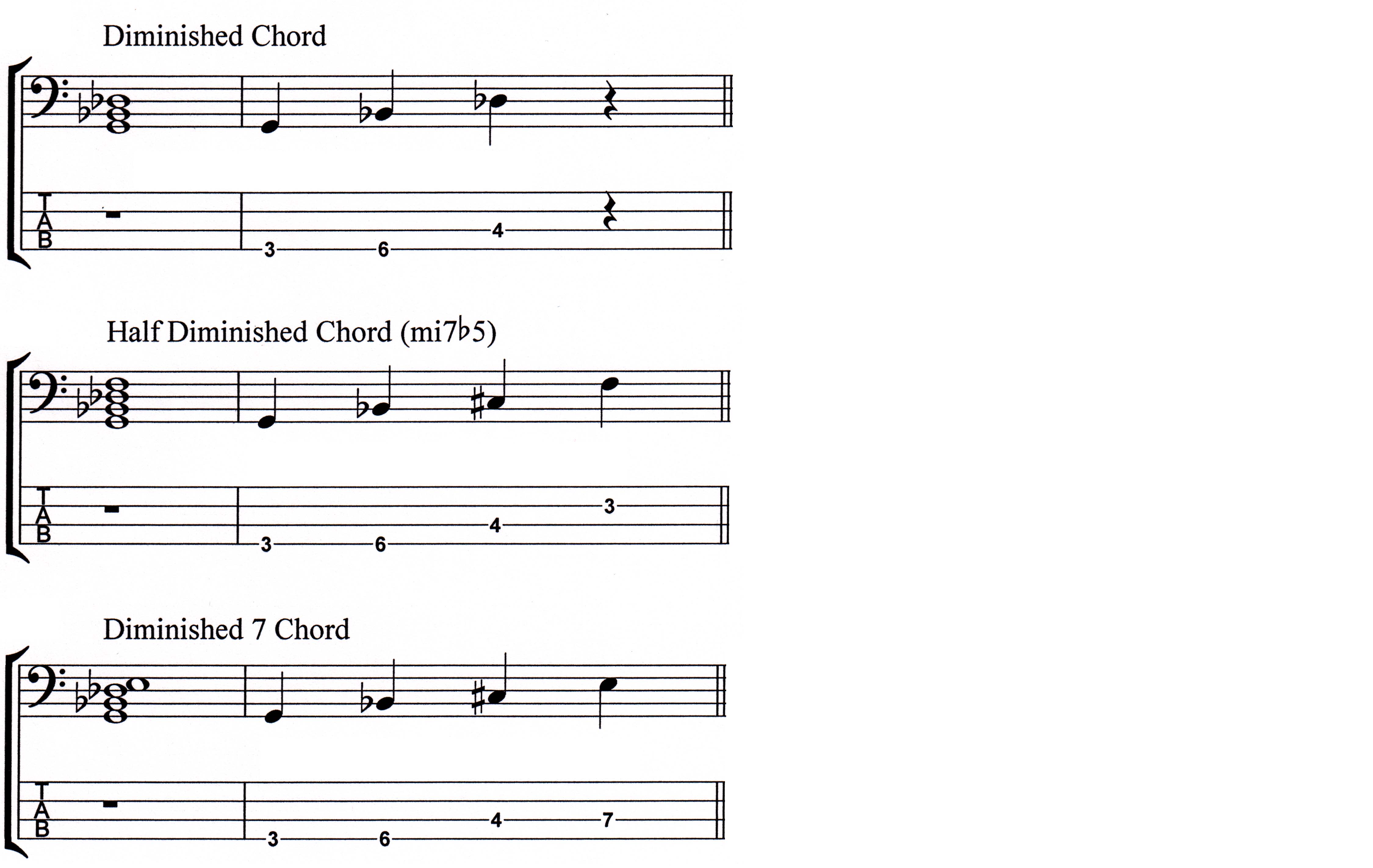
Augmented chords are simply major chords with an altered 5 tone, which is sharped. You can also create a dominant 7 chord with a #5; simply raise the 5 tone sharp and you're there. It is often called a dom7alt5, too.
So, a Gaug (also displayed like this: G+) chord is: G/1, B/3,
D#/#5; and a
Gdom7#5 is: G/1, B/3,
D#/#5,
F/b7. Take a look at the chart.
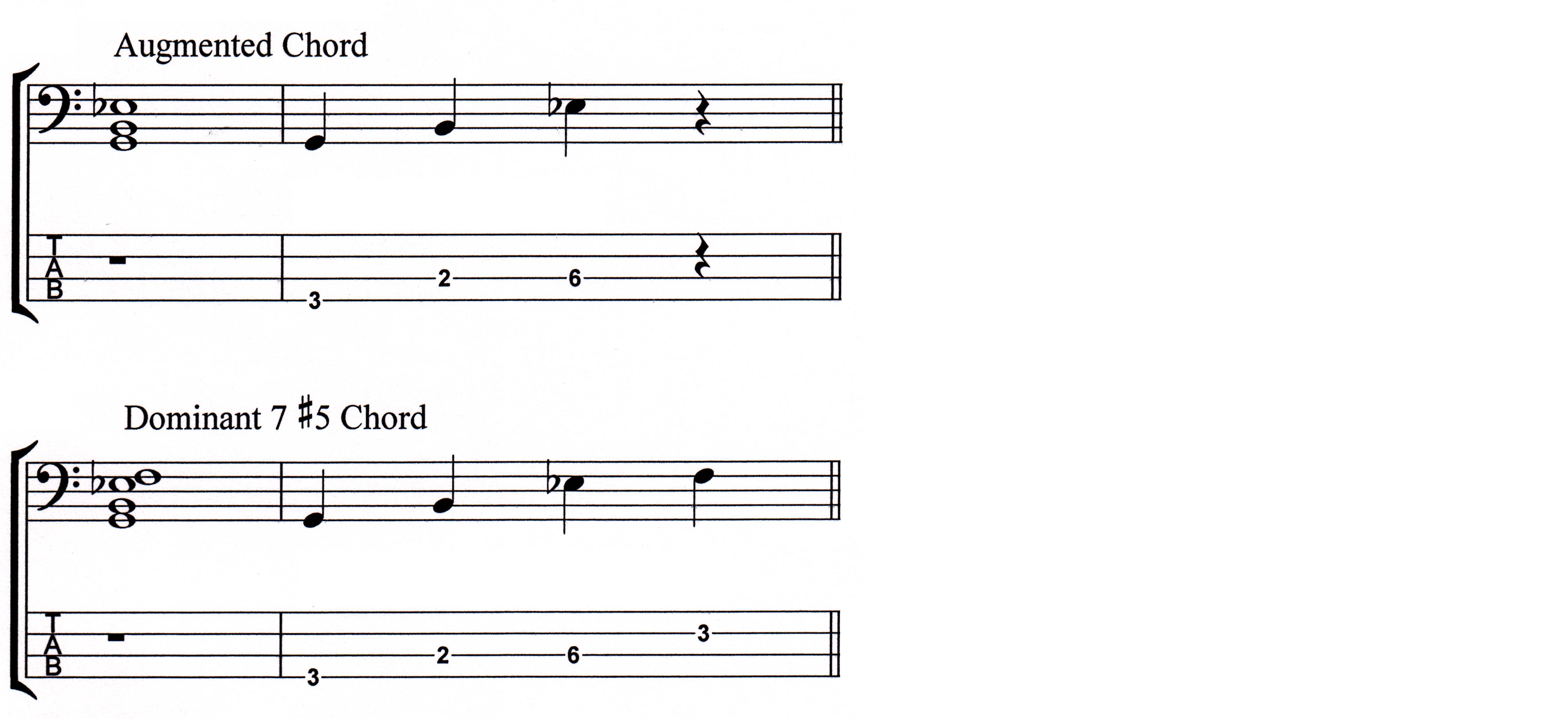
Suspended chords come in two flavours: suspended 2 (1,2,5) and suspended 4 (1,4,5). You can suspend a dominant chord by raising the 3 tone to the 4, retaining the
b7 and 5. Check the chart.
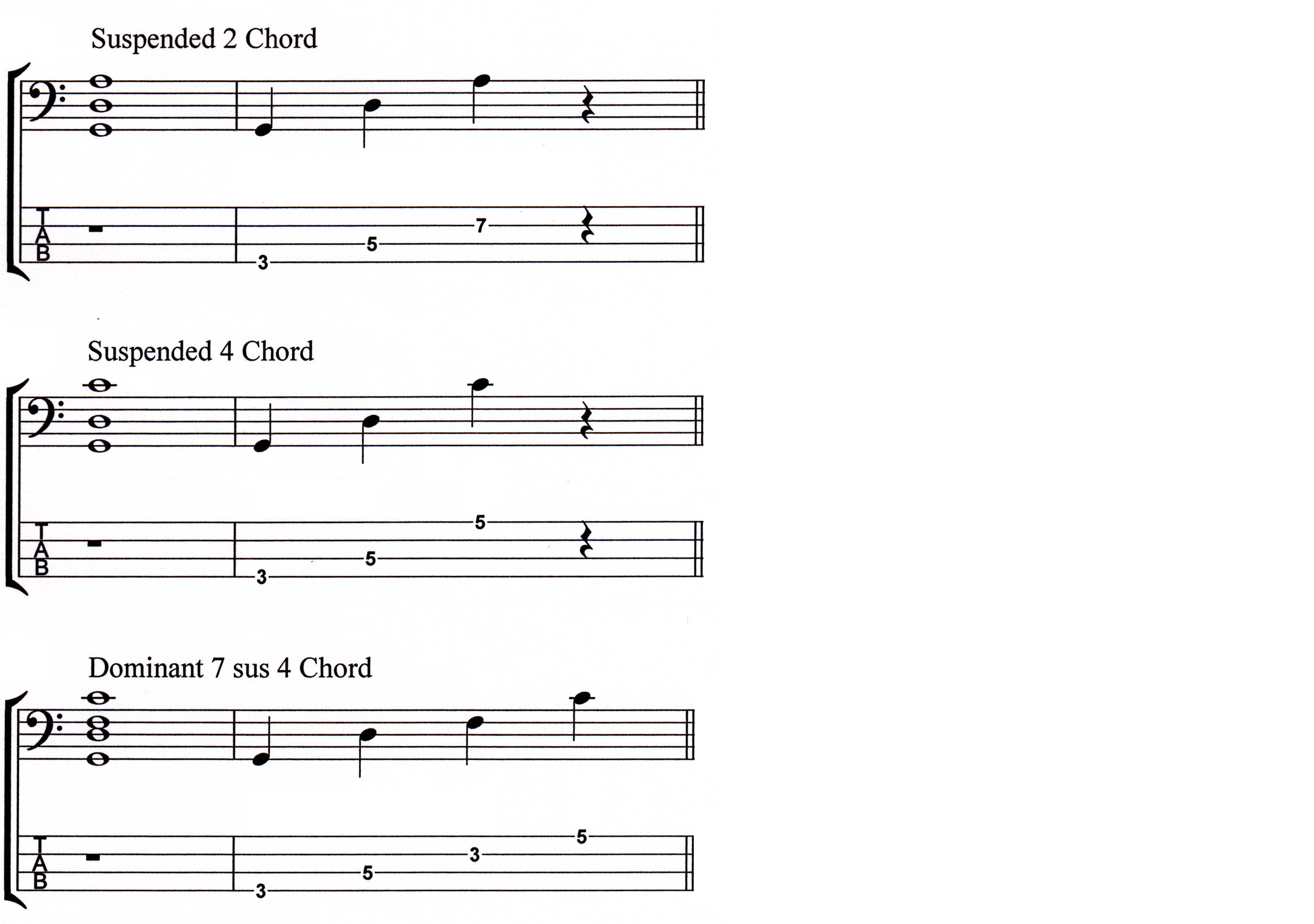
A terrible common practice is to simply call a chord a "sus" chord, like this: Esus. The problem is that I don't know which suspended chord you mean. Another common practice is to call it a 2 chord, like this: C2. This has zero meaning to me. Do you mean Csus2? Or do you mean Cadd9? Big difference! You may think it's a semantic thing, but it isn't. Chord names can be confusing enough without adding to the problem - especially for new players. Let's keep it consistent and true to the theoretical constructs, please!
Any other chord you encounter, such as a dominant 7 with a b9, is simply altered or added to from the original core type (major, minor, dominant, etc.).
Yes, again, it can make your brain hurt trying to understand these "rules". But just accept it as the way things are. It isn't that hard to sort out and remember; and we don't want to wade too deep into the theory on this, right?
The chart I keep telling you to look at is important to understand - memorize the information it contains. I've displayed it in the key of G, but you can transpose it to any key - since scales and chords are not key dependent!
So the basic rule here is to look at the what, maj7, mi7, dom7 etc., and less about the where, the key (A, B, C, E, G, etc.), and then determine what's been added or changed, whether it is the 5, 7, 9, 11, or 13. Do this and it becomes fairly simple to make adjustments on the fly. Well, once you get the hang of it anyway. It just takes a little work and time and repeated practice to become second nature.
And once it does become "natural", then you will have a whole lot of options. And options are what its all about!
Next time!